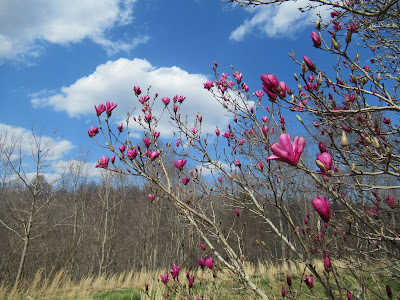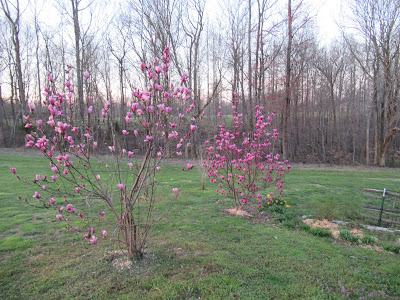Kildeers arrived from their cold weather habitats while it was still officially winter here in south-central Kentucky.
By February they were in evidence as I walked along the gravel lane that connects us to the main road.
They swooped low over our neighbor's cow pasture, alighting to strut along the verge of the lane uttering their distinctive cry, 'Peent, peent!'
Watching them I hoped that avian wisdom would caution against eggs laid in weather that would surely drop below freezing.
During the past two weeks the warning cries of the kildeers have become more strident, their zig-zag flights more pronounced whenever I walk along the lane or in the adjoining meadow.
Friday as I walked along the freshly graveled portion of the lane, a kildeer flew up from the bank screaming frantically, doing the classic 'broken wing' maneuver in front of me.
Stepping cautiously along the stony edge of the bank I discovered the nest--if it can be called that--eggs deposited in a slight depression in the rough ground.
I fetched my simple camera from the house, trudged back to where the kildeer once again went into defensive display.
The nest contained four or five eggs, several of which were split open with baby birds motionless amidst the shattered shells. One egg had only a hairline crack. I suspected that the tiny birds were dead.
When I returned in the evening there was no sign of broken eggshells. One baby bird was on the ground, legs tucked under its body. I touched it ever so gently with one finger and it stirred.
Jim and I walked that way at about 6 Saturday evening.
I had built a small cairn of light colored rocks to mark the place.
Several kildeers swooped about us, following us to the mailbox, but there was no frantic diversionary display or interest in the spot where the eggs had been.
No baby bird remained, there was nothing to indicate that the spot had been a nest site.
Standing quietly by the fence we observed the tiny birds scuttling around a tussock of grass at a little distance, while the adult kildeers circled nearby, vocalizing.
A google search informs that kildeers spend 22-28 days incubating their clutch of 4-6 eggs; kildeer chicks hatch fully feathered and as soon as the feathers dry they are ready to toddle about.
It is estimated that only 53-60 percent of the hatchlings fledge.
This is the second kildeer nest I've discovered here; kildeers apparently don't choose nesting spots with safety in mind. Their distinctive markings and behaviors make them an interesting addition to our rural landscape. Of my several efforts to zoom in on mother kildeer's protective antics, I'm pleased with the photo below.










